180 Years of Queen's
For 180 years, Queen’s University Belfast has been at the heart of education, research and innovation, shaping generations of students and contributing to society in many ways.
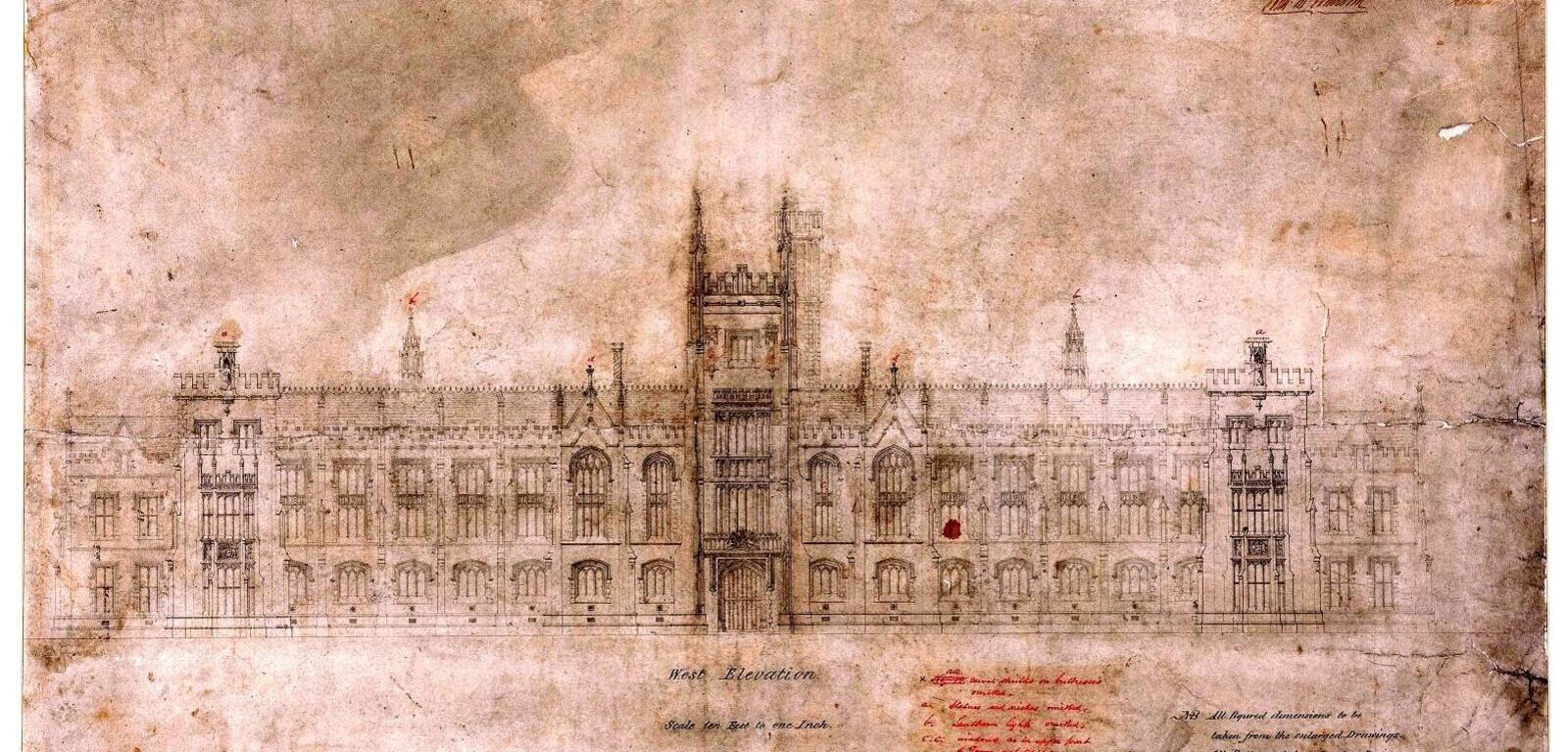
From major scientific breakthroughs and world-leading innovation to growing vegetables in the Quad and growing international businesses, Queen’s has never stood still.
From its foundation in 1845 as Queen’s College Belfast, to its emergence as a global centre for learning, the University has continually evolved, adapting to the challenges of each era.
We reflect on the defining moments, achievements and people who have shaped Queen’s along the way.
FOUNDATION AND EARLY YEARS
Four years after the Irish Colleges Act established three different colleges in Belfast, Cork and Galway, Queen’s opened its doors as Queen’s College Belfast.
At the heart of this new institution was the iconic Lanyon Building. Designed by Sir Charles Lanyon and inspired by Magdalen College in Oxford, it quickly became a recognisable symbol of Queen’s – one that still turns heads today.
Teaching began in November with 20 professors and 195 students across three faculties: Arts, Medicine and Law. By 1850, Queen’s College Belfast was fully operational, with its newly opened buildings bustling with activity.
BUILDING A STUDENT COMMUNITY
In the early years, limited government funding meant there were few resources to support student life. However, the students soon found ways to create a sense of community on campus.
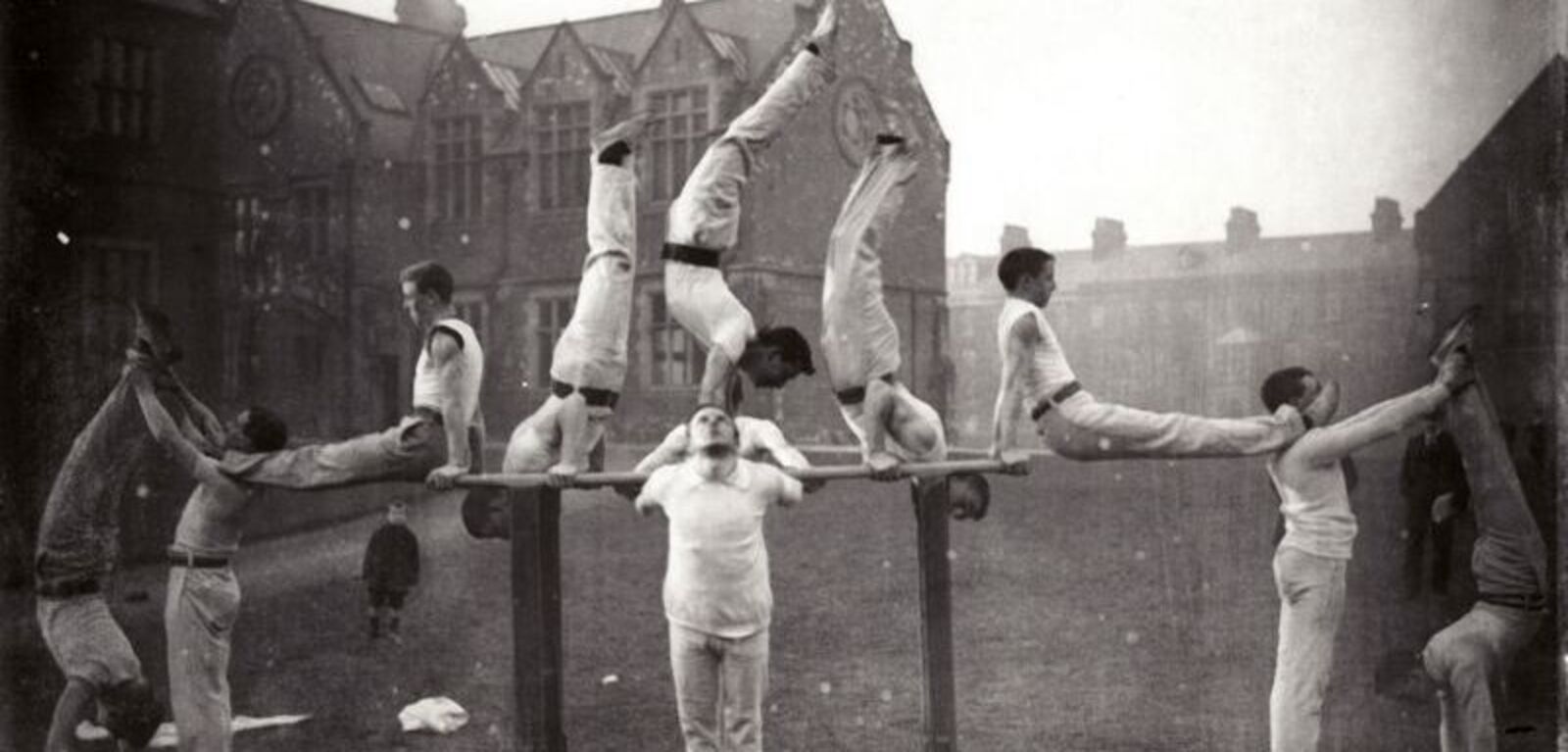
Students perform gymnastics outside the Lanyon Building
The first university society, the Literary and Scientific Society (‘The Literific’) was set in 1850 and remains a vibrant group today. Its first president, Edwin L. Godkin, became a renowned journalist, and his legacy is commemorated with a plaque in the Black and White Hall of the Lanyon Building.
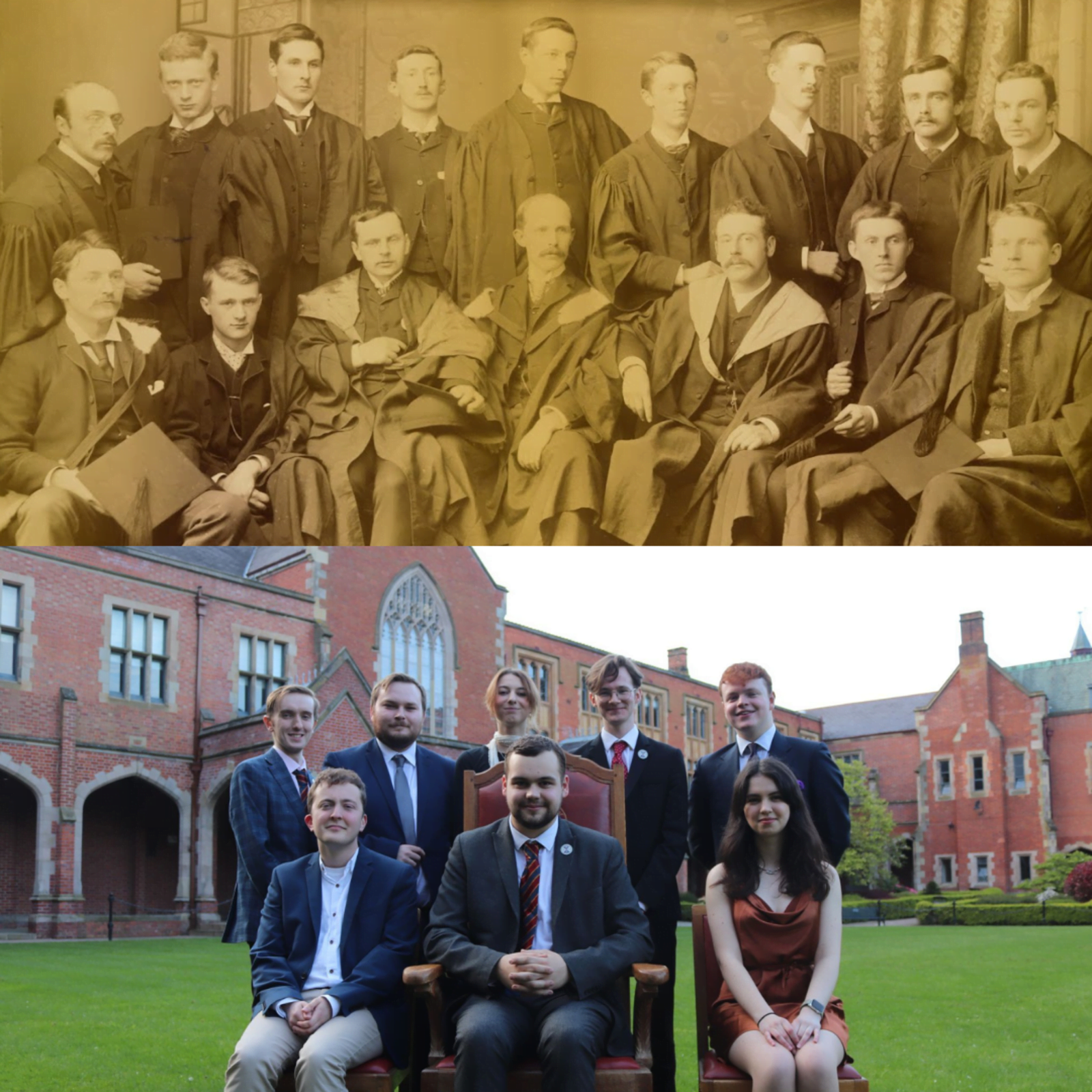
The first ‘Literific’ society in 1890 and today’s society, pictured in 2024
In the 1960s, Music and French student Phil Coulter from Derry-Londonderry founded the Glee Club at Queen’s. By 1964, his final year at university, Coulter had already written a couple of songs that would later become hits, including "Foolin' Time" for the Capitol Showband and an adaption of "Terry" which was No. 4 hit for UK star Twinkle. He went on to become a Grammy-nominated musician, songwriter and record producer.
In 1981, students Peter Jackson, John McGregor, Patrick Ferrity and John Donnelly won the hit BBC academic quiz show University Challenge. The team were first on the show in 1980, when they won one game but then lost narrowly "due to an error with the new automatic gong". So, they were invited back the year later with one win already under their belt.
The tradition of Queen’s quizzers entering University Challenge is still very much alive today, and most recently, Quiz Society members Daniel Rankin, Sarah Carlisle, Jason McKillen and Sam Thompson made it to the quarter-final, narrowly losing out to Queen's College, Cambridge.
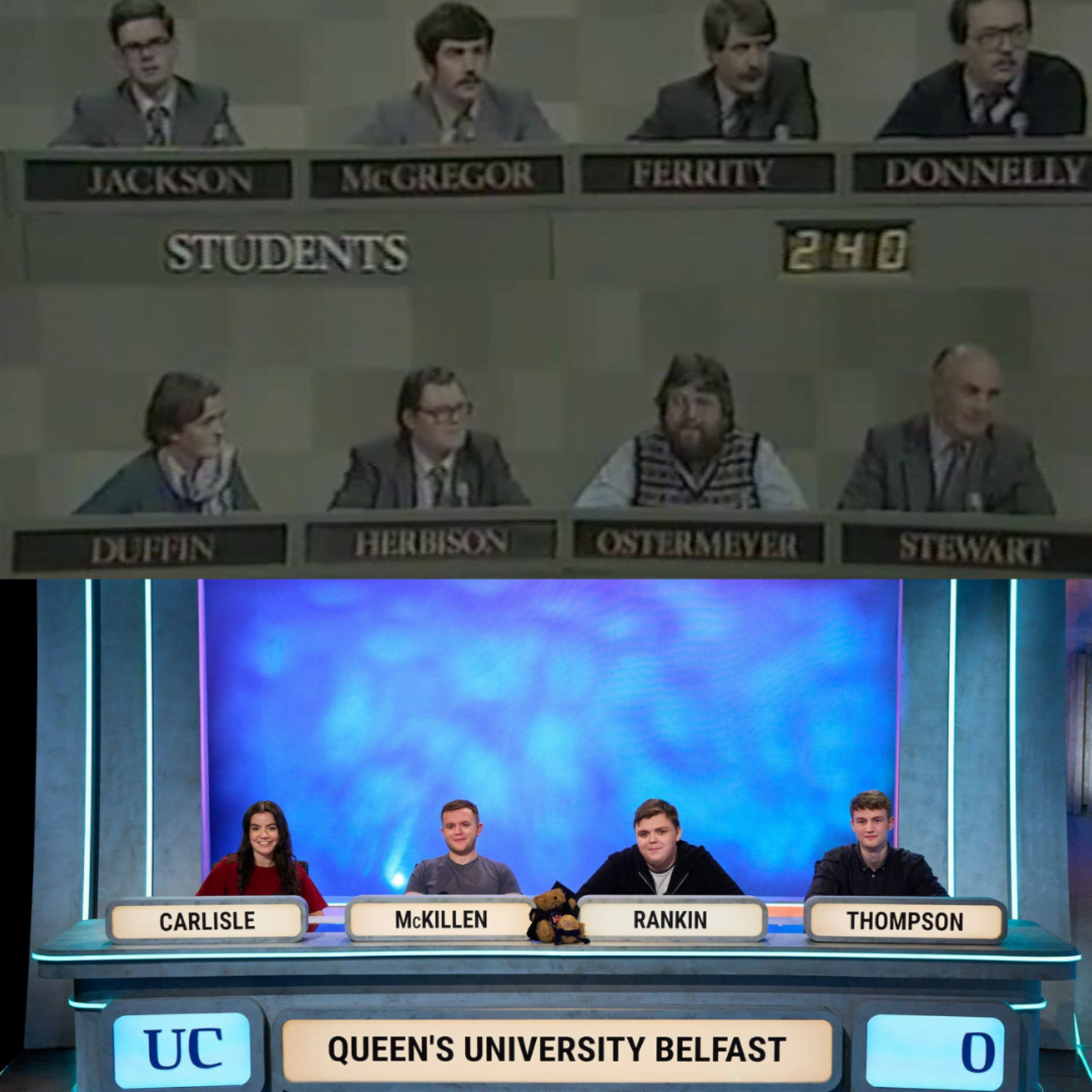
Queen’s on University Challenge – 1981 > 2024. Image credit: Top – blanchflower.org, Bottom: BBC
It’s remarkable to think that the humble beginnings of student societies have grown into around 260 clubs and societies, supported by a dedicated team at the Students’ Union who help students transform their ideas into thriving communities. Amongst those active today are the Rubber Duck Appreciation Society, the Wine and Cheese Society, and even a Taylor Swift Society showing that, at Queen’s, there truly is something for everyone.
THE STUDENTS’ UNION
The Students’ Union is a key part of university life, and a plan to establish a dedicated Students’ Union building began in 1884 with a fundraising bazaar. By 1896, a stone-laying ceremony marked the beginning of the construction of its new home. The Students’ Representative Council was subsequently founded in 1900 to give students a voice with university authorities.
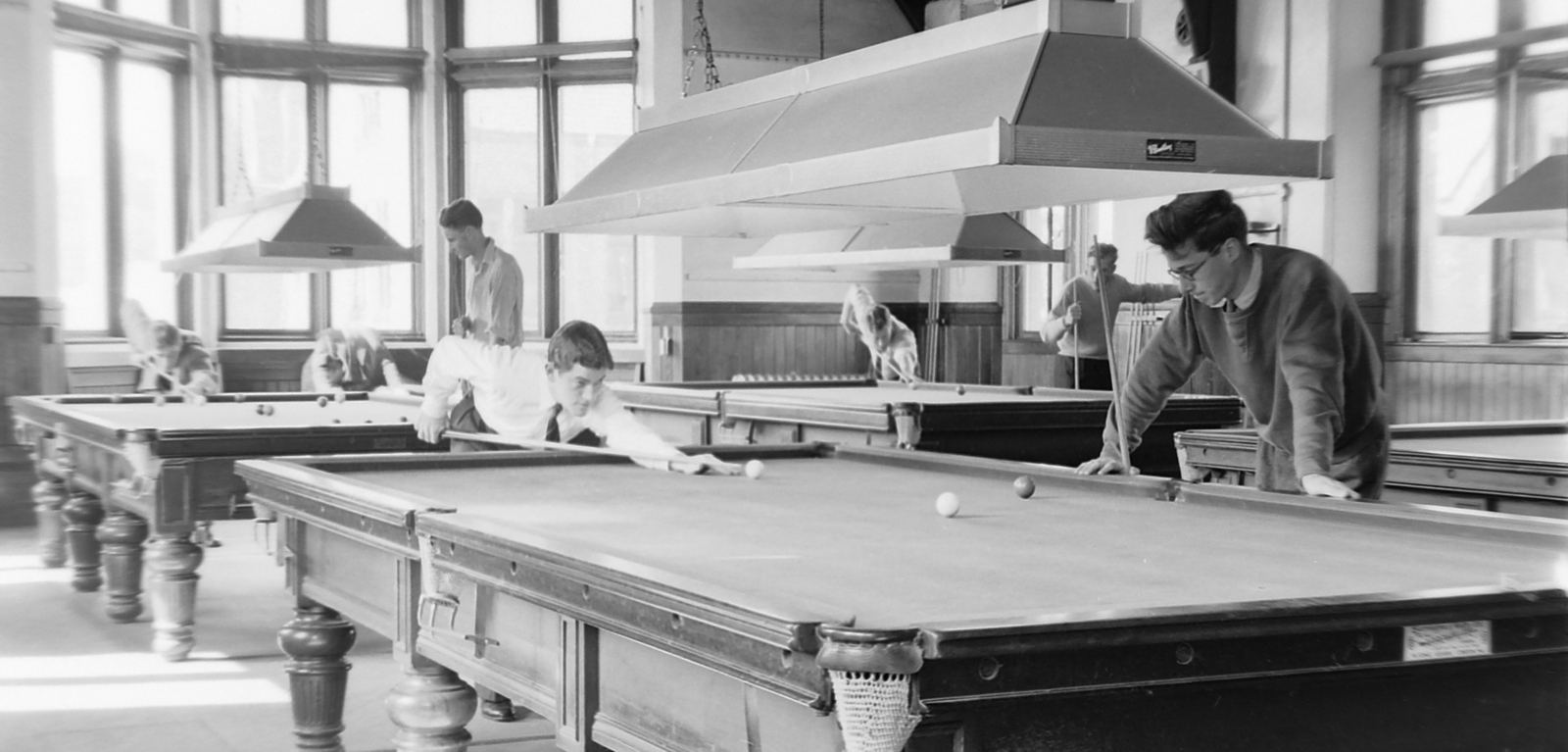
Students play pool in 1957 in the original Students’ Union building
Today, the Student Council remains the Union’s main representative forum, made up of representatives and other elected students, ensuring that student voices are heard across the University.

The current Students’ Union Officer team
BECOMING AN INDEPENDENT UNIVERSITY
In 1902, Rev Thomas Hamilton, who had served as President of Queen’s College since 1889, led discussions which resulted in the Irish Universities Act of 1908. This act separated the colleges in Cork and Galway from Belfast, granting Queen’s autonomy and transforming it into Queen’s University of Belfast. Hamilton became the University’s first President and Vice-Chancellor in 1908 and is credited with laying the foundations for Queen’s as it operates today.
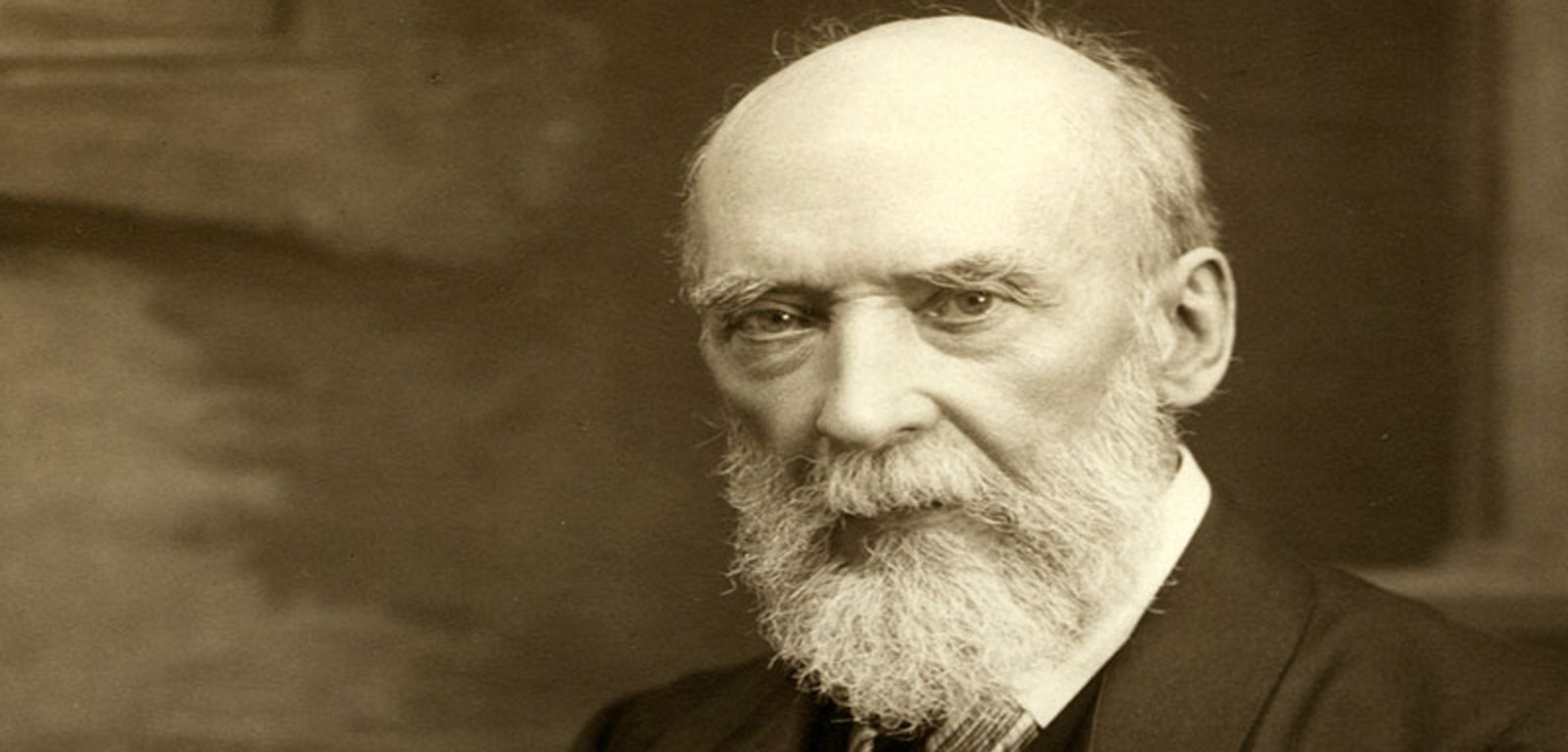
Rev Thomas Hamilton
CAMPUS EXPANSION
Queen’s historian Andrew Holmes tells us:
“Hamilton energetically pursued increased funding and established the Better Equipment Fund in 1901. Not only did this provide much needed money for extra teaching staff and buildings, it also reinforced the links between the college and the local community.”
Between 1912 and 1914, architect William Henry Lynn extended the Old Library in his neo-Gothic style, lending a ‘church-like’ quality to the non-denominational college. Restored in 2015, the Old Library is now a state-of-the-art home for postgraduate students.
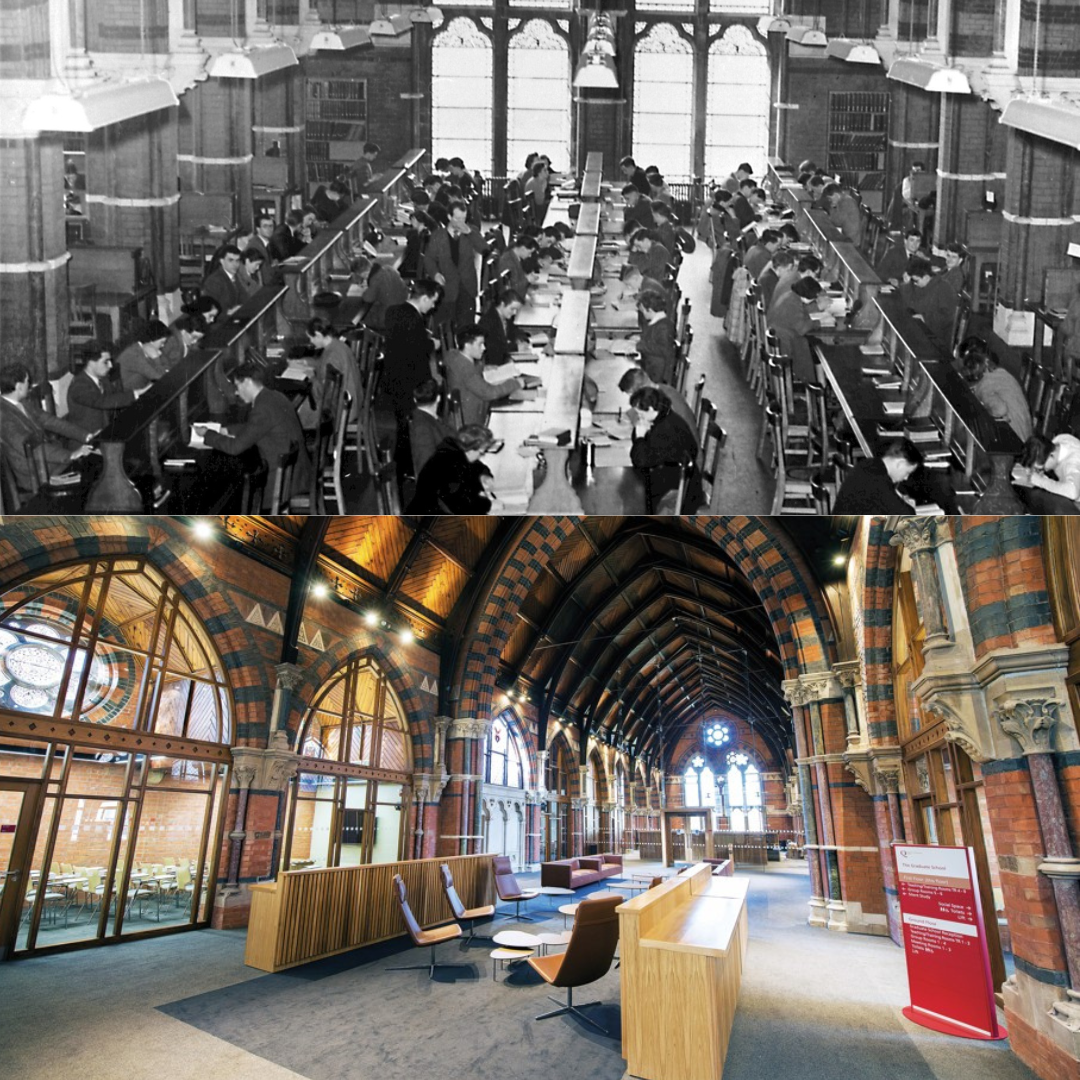
The Lynn library is now the Graduate School, and with the original neo-gothic features still intact, it’s one of the most ‘Instagram-worthy’ spots on campus
The Queen’s campus has often served the local community in times of need. During World War I, part of the University grounds was used as a military hospital. In later years, vegetables were grown in the Quad to support the war effort.
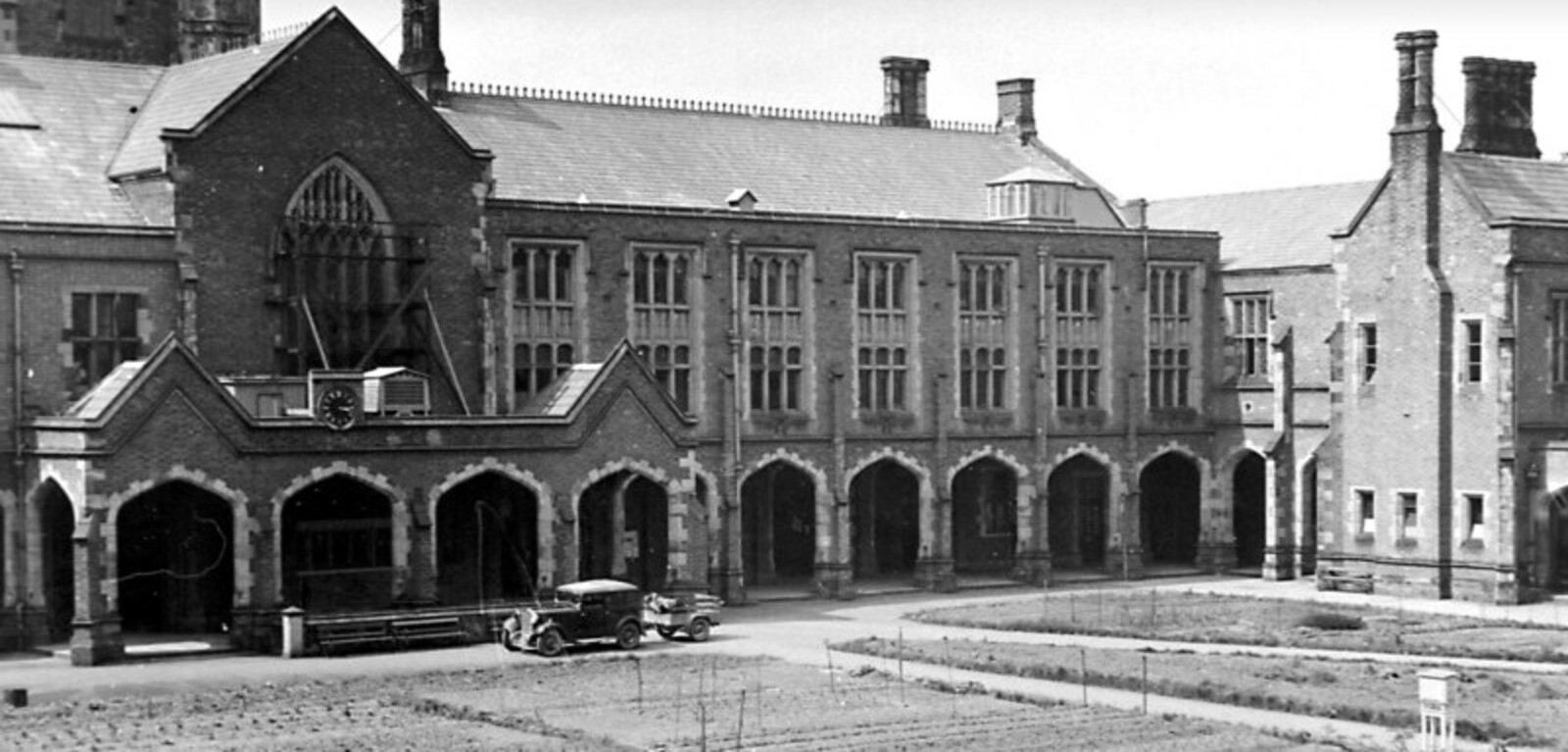
Crops on campus
According to Andrew Holmes:
“The efforts of governments after the Second World War to increase access and funding to higher education allowed Sir Eric Ashby and his successors to undertake an ambitious building programme. This produced much of the physical fabric of the university we know today, including the David Keir Building, the Ashby Building, and the Peter Froggatt Centre. This accommodation was much needed as by 1976, 5,800 students were enrolled in the university.”
Today, Queen’s campus has over 250 buildings, 98 of which are listed for their architectural significance. In recent years, significant additions include the Sonic Arts Research Centre, the Computer Science building, and the One Elmwood Student Centre and Students’ Union – a modern hub designed to support student life for generations to come.
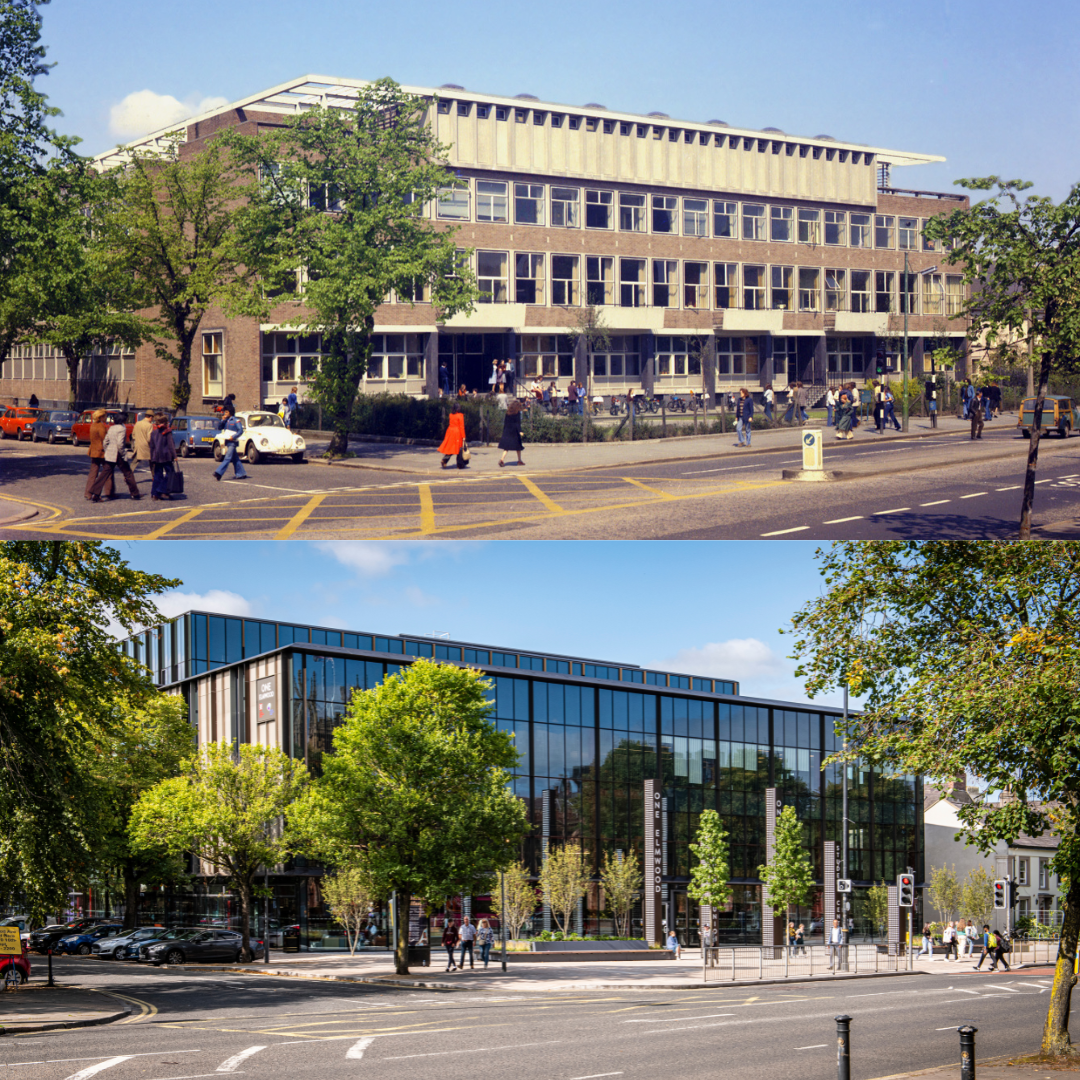
Out with the old and in with the new
WORLD-LEADING INNOVATIONS
Across decades, Queen’s researchers have been at the forefront of discoveries that have reshaped industries and improved lives. Here are just a few of the transformative breakthroughs we’ve celebrated over the years.
BELL’S THEOREM
‘Ireland’s Einstein’ John Stewart Bell, who graduated from Queen’s with a BSc in Experimental Physics and a BSc in Mathematical Physics, published Bell’s Theorem in 1964, which physicists, philosophers and historians now consider to be one of the most significant developments in quantum theory. It resolved a decades-old dispute which ultimately demonstrated that Einstein’s views on quantum mechanics were incorrect.
PORTABLE DEFIBTILLATOR
In 1965, Queen’s graduate, physician and cardiologist, Professor Frank Pantridge, transformed emergency medicine and paramedic services with the invention of the world’s first portable defibrillator which has saved millions of lives across the world over the past 60 years.
SET TOP BOX TECHNOLOGY
Professor Maire O’Neill earned her PhD from Queen’s in 2002, during which she invented a high-speed silicon security chip that is now used in more than 100 million TV set-top boxes. One-time British Female Inventor of the Year, Professor O’Neill is widely regarded as one of Europe’s leading cryptography experts, helping enhance global data security.
ASSISTING COMET LANDINGS
In 2014, Professor Alan Fitzsimmons and his colleagues at Queen’s Astrophysics Research Centre played a major role in the first-ever comet landing, calculating the measurements of the comet to ensure the most likely chance of success, as part of the Rosetta Space Mission.
UNESCO CHAIR STATUS FOR WORK ON SHARED EDUCATION
In 2015, Professor Joanne Hughes, Director of the Centre for Shared Education, was appointed the first ‘UNESCO Chair on Globalising a Shared Education Model for Improving Relations in Divided Societies’ for her work on shared education and promoting reconciliation in divided societies.
SONIC INNOVATIONS
A team led by Professor Michael Alcorn, from Queen’s Sonic Arts Research Centre, developed revolutionary new surround sound techniques for cinema that were first used in films such as Jurassic Park.
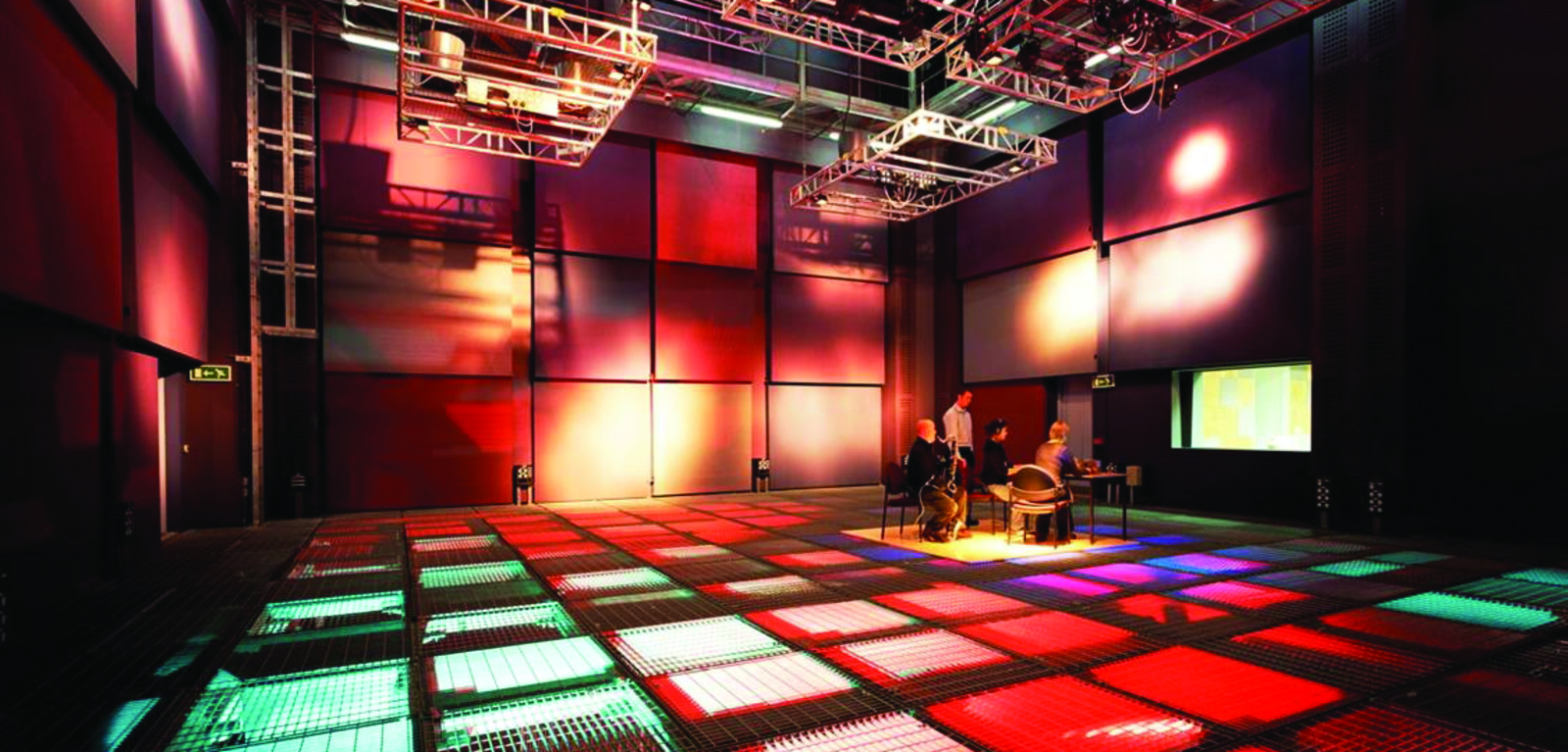
Our state-of-the-art Sonic Research Centre opened in 2004
THE NEXT CHAPTER
As Queen’s University Belfast celebrates its 180th anniversary, its legacy speaks for itself - an institution that has shaped minds, driven innovation, and made a lasting impact on society.
From its beginnings as a small college in Belfast to its status as a world-leading university, Queen’s has never stood still. It has continually evolved, embracing new challenges and pioneering breakthroughs across science, technology, the arts, and beyond.
But the story of Queen’s isn’t just about its past - it’s about the students, staff, and alumni who will shape its future. With a rich heritage as inspiration, the University is poised to lead the way for the next generation of thinkers, innovators, and changemakers. Here’s to the next 180 years.